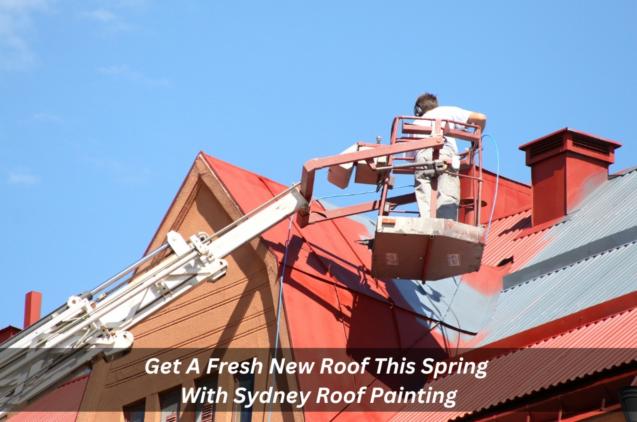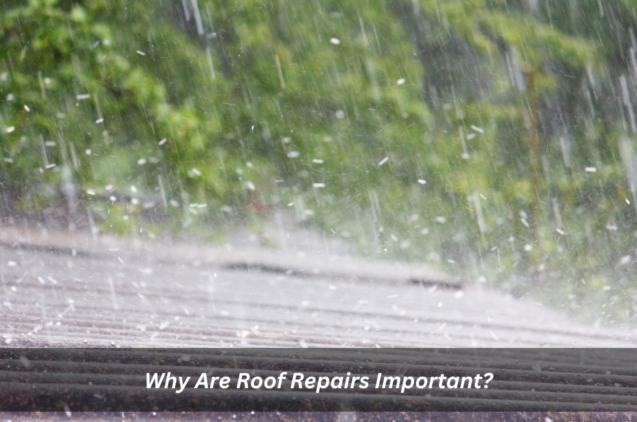
Can You Paint Over A Roof With Multiple Layers Of Existing Paint?
In this article, we will delve into the options, safety precautions, preparatory measures, and maintenance guidance for the task of painting over a roof with numerous layers of existing paint.
Why might you want to paint over existing roof paint?
Before diving into the specifics, let's understand why you might want to paint over your existing roof paint. There are several reasons that could motivate this decision:
1. Aesthetic Enhancement: Over time, the color of your roof can fade due to exposure to harsh weather conditions. Painting over existing paint can refresh its appearance and enhance the curb appeal of your home.
2. Protective Coating: Paint acts as a protective barrier against the elements. Applying a new coat can extend the life of your roof, preventing issues like rust or corrosion on metal roofs.
3. Cost Savings: Painting over existing paint is often more cost-effective than completely stripping the old layers and starting from scratch. It saves you both time and money.
Is it safe to paint over multiple layers of roof paint?
Prioritizing safety is essential when embarking on a roof painting endeavor, especially when dealing with multiple layers of existing roof paint. Ensuring a safe painting process is crucial, and here are some tips to help you achieve that when you decide to paint roof surfaces:
1. Inspect the Roof: Before starting any work, carefully inspect the condition of your roof. Look for any signs of structural damage, leaks, or weak spots. Address these issues before proceeding with the paint job.
2. Use appropriate safety gear: Roof work can be hazardous. Make sure you have the right safety equipment, including non-slip shoes, a safety harness, and fall protection gear.
3. Weather Conditions: Avoid painting on windy or rainy days. Wet or slippery surfaces can lead to accidents.
4. Beware of Lead Paint: If your roof was painted before the late 1970s, it may contain lead-based paint. Take precautions, such as wearing a mask and using drop cloths, to avoid exposure.
How can you tell if your roof is ready to be painted over?
Before you start painting over multiple layers of existing roof paint, it's essential to ensure that your roof is ready. Here's how to determine if it's in the right condition for a fresh coat of paint:
1. Cleanliness: The roof should be thoroughly cleaned to remove dirt, debris, and any loose or flaking paint. Pressure washing is often the best way to achieve this.
2. Surface Condition: Examine the roof's surface for any cracks, holes, or rust. These issues should be repaired before painting.
3. Adhesion Test: Perform an adhesion test by applying a small amount of paint to a test area. If the new paint adheres well and doesn't peel or bubble, your roof is ready for painting.
How should you prepare your roof for painting over multiple layers of existing paint?
Proper preparation is the key to a successful house roof painting project. Follow these steps to get your roof ready:
1. Clean the Roof: Start by cleaning the roof surface. Remove dirt, debris, and loose paint using a pressure washer or a stiff-bristle brush. Pay special attention to areas with peeling paint.
2. Repair and Patch: Address any structural issues, cracks, or holes in the roof. Use patching materials to fix these problems. Make sure the roof is dry before moving on.
3. Prime the Surface: Applying a primer is essential for adhesion. Choose a primer that is compatible with your selected paint type. Follow the manufacturer's instructions for application.
4. Apply the Paint: Once the primer has dried, you can start applying the new paint. Use a high-quality brush, roller, or sprayer, depending on the size of your roof. Apply two coats for the best results.
What are the steps involved in painting over multiple layers of existing roof paint?
Here's a step-by-step guide to painting over multiple layers of existing roof paint:
1. Gather Your Materials: Make sure you have all the necessary tools and materials, including paint, primer, brushes, rollers, drop cloths, and safety equipment.
2. Clean the Roof: Begin by cleaning the roof surface thoroughly. Remove any dirt, debris, or loose paint. Pressure washing is often the most effective method.
3. Inspect and Repair: Carefully inspect the roof for any structural damage, cracks, or holes. Address these issues before proceeding.
4. Prime the Surface: Apply a high-quality primer that is compatible with your chosen paint type. Follow the manufacturer's instructions for drying times.
5. Paint the Roof: Use a brush, roller, or sprayer to apply the first coat of paint. Start from the highest point and work your way down. Allow the first coat to dry according to the paint manufacturer's recommendations.
6. Apply the Second Coat: After the first coat is dry, apply a second coat of paint. This second coat ensures even coverage and greater durability.
7. Cleanup: Clean your tools and dispose of any paint or debris properly.
What are some tips for troubleshooting problems when painting over multiple layers of existing roof paint?
While painting over existing roofs can be a practical solution, you may encounter some challenges along the way. Here are some tips for troubleshooting common problems:
1. Peeling or Bubbling Paint: If you notice peeling or bubbling paint, it may be due to poor adhesion. In such cases, you may need to strip the roof and start over with proper surface preparation.
2. Uneven Color: To achieve an even color, ensure that you apply paint consistently and avoid excessive overlap between strokes. Use quality paint and the right tools.
3. Leakage: If you notice leaks after painting, they may be due to pre-existing issues. Address any roof leaks promptly, as they can damage your newly painted surface.
4. Chalking: Chalking refers to the formation of a powdery residue on the paint surface. To prevent chalking, choose high-quality, UV-resistant paints.
How can you maintain your painted roof to extend its lifespan?
Proper maintenance can significantly extend the lifespan of your painted roof. Here are some maintenance tips to keep in mind:
1. Regular Inspections: Periodically inspect your roof for any signs of damage, wear, or discoloration.
2. Cleaning: Clean your roof at least once a year to remove dirt, debris, and any mildew or mold growth. Use a gentle cleaning solution and a soft brush.
3. Prompt Repairs: Address any issues promptly to prevent further damage. Repair any cracks, holes, or loose shingles immediately.
4. Recoat as Needed: Keep an eye on the condition of the paint. If you notice significant fading or peeling, consider applying a fresh coat of paint to maintain the roof's protective barrier.
When should you consider hiring a professional to paint your roof?
While painting your roof can be a rewarding DIY project, there are certain situations where hiring a professional is the best option:
1. Complex Roofing Structures: If your roof has a complex design or is difficult to access, professional painters have the necessary skills and equipment to handle the job safely.
2. Time Constraints: If you have time constraints or lack the necessary experience, hiring professionals can ensure a quick and efficient paint job.
3. Safety Concerns: Roof work can be hazardous, especially for those without proper training. Hiring professionals eliminates the risks associated with working at heights.
In conclusion, painting over multiple layers of existing roof paint is indeed possible with the right approach and preparation. By following the recommended steps, choosing the appropriate materials, and prioritizing safety, you can achieve a refreshed and visually appealing roof that provides long-lasting protection for your home.
Regular maintenance and timely repairs can further extend the lifespan of your painted roof, ensuring that it remains an attractive and functional part of your property for years to come. If in doubt, always consider consulting or hiring a professional to ensure the best results for your roof painting project.



